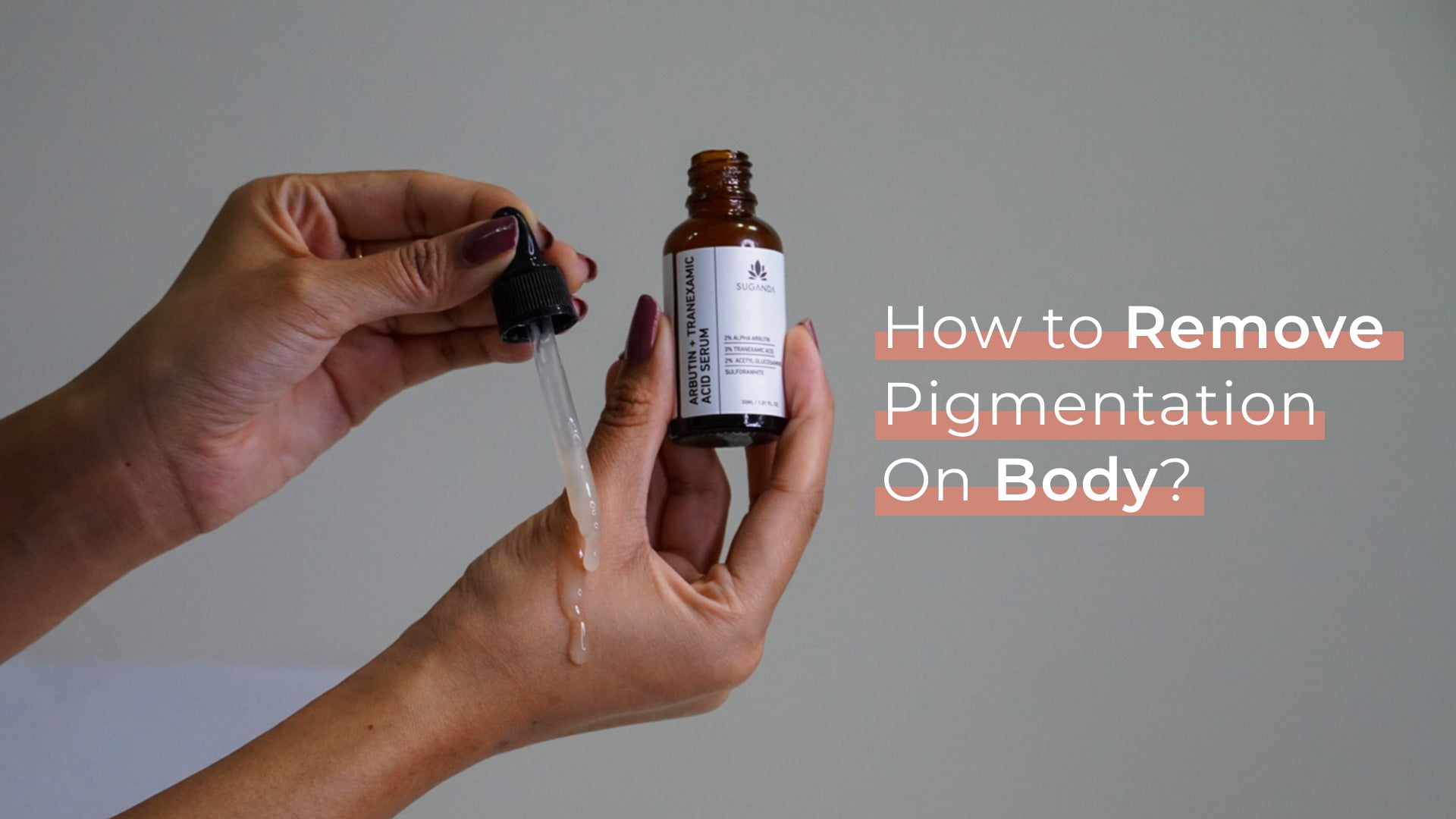Hyperpigmentation generally refers to uneven skin tone, where certain spots on your skin become darker than the surrounding areas. These spots are also referred to as age spots or sun spots that can appear on different parts of the body, including your face, hands, legs, back, etc.
In this write-up, we will discuss the different types of pigmentation and the ingredients that will help treat this pigmentation. We will also discuss the time it would take to fade these spots.
What are the different types of pigmentation?
As already discussed above, hyperpigmentation is a skin condition where certain body spots appear dark compared to their surrounding areas. The most common cause of hyperpigmentation is unprotected exposure to the sun.
Technically, people with phototypes 3-6 are more prone to pigmentation than the ones with phototypes 1 and 2. Let’s now discuss the different common types of pigmentation.
Age Spots
Some people notice the development of age spots on your skin, called freckles that most commonly appear on the face, neck, upper part of the chest, hands, and arms. These spots are developed because of unprotected exposure to the sun or too much exposure to the sun.
These spots are generally small patches that make your skin look uneven.
Melasma
Melasma is also known as chloasma. It is a skin condition where patches have a bigger circumference, and appear on different body parts. They usually cover your face. Experts say that melasma can occur in both men and women. However, these spots are generally seen in women, as this skin condition is believed to get triggered by hormonal changes.
Sometimes, melasma is also referred to as 'the mask of pregnancy,' as 10-15% of women experience these spots during pregnancy while 10-25% experience the development of these spots while taking oral contraceptives.
Post-inflammatory pigmentation
Post-inflammatory pigmentation is formed when your skin recovers from an injury, and that injury leaves a flat area of discoloration. This kind of pigmentation can also occur post-acne and can also be caused by various cosmetic procedures, including laser treatment, chemical peels, and dermabrasion.
Ingredients that can help fight pigmentation
Let’s us take a look at some of the most common ingredients that will help lighten hyperpigmentation.
Topical creams
Topical creams are used on a large scale to treat hyperpigmentation. These creams shall include ingredients like;
- Vitamin C
- Azelaic acid
- Cysteamine cream
- Hydroquinone
- Kojic acid
- Arbutin
- Retinoids
- Corticosteroids
- Niacinamide
- Mequinol
- Glycolic acid peels
- N-acetyl glucosamine
- Soy
Creams that contain hydroquinone and steroids can take a minimum of 12-24 weeks to bring a change to your skin.
Experts advise that you speak to your dermatologist before using a skin-lightening product, as some of them might not be suitable for your skin type. Furthermore, experts focus on the fact that you should prefer buying over-the-counter products from a reputed source. Also, follow the instructions on the packaging.
Note: These products will help reduce the dark spots on your skin, and they do not lighten your complexion. In addition, consistency is the key.
Cosmetic procedures
Besides topical treatments, a few cosmetic procedures are designed to light the effects areas of the skin. These treatments include;
- Laser therapy
- Chemical peels
- Intense pulsed light
People who don’t get benefited from topical treatments or the ones who wish to see quick results usually go for these treatments. However, such people should ensure talking to a dermatologist or a skin care specialist to know the treatment process and its possible side effects.
Note: Cosmetic procedures should be done under an expert’s supervision as they can cause damage by injuring the outer layer of your skin.
Home remedies to treat hyperpigmentation
Natural remedies can also help to cure hyperpigmentation to a large extent. Let us look at some of the most effective natural ingredients that will help get visible results with regular application.
Aloe vera
Aloe vera consists of a compound known as Aloesin, which helps lighten hyperpigmentation. This compound checks the production of melanin in the skin, restricting pigmentation.
According to a 2017 study, aloe vera capsules can help relieve melasma in pregnancy.
You can apply aloe vera gel extracted directly from the plant or use the packaged gels available on the market.
Licorice
According to research done in 2019, licorice extract, also called glabridin, has antioxidant, anti-inflammatory, and skin-whitening effects, which work to lighten hyperpigmentation.
Green tea
Green tea is studied for its potential anti-inflammatory and antioxidant properties and is proven to lighten hyperpigmentation with regular use.
References:
https://pubmed.ncbi.nlm.nih.gov/28139161/
https://www.ncbi.nlm.nih.gov/pmc/articles/PMC6826613/
https://www.ncbi.nlm.nih.gov/pmc/articles/PMC5843359/







 +91 9347578980
+91 9347578980